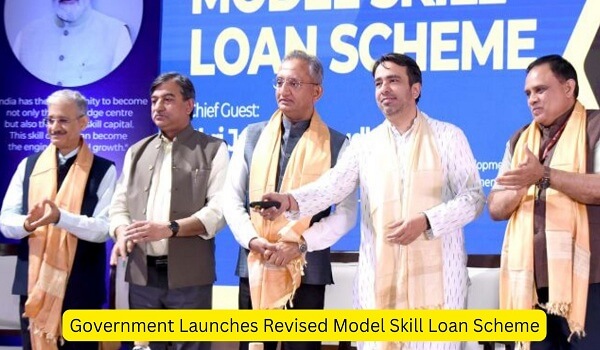The government has launched a revamped ‘model skill loan scheme’ aimed at enhancing accessibility to skill development courses with a significantly increased maximum loan limit.The new scheme raises the maximum loan limit from Rs 1.5 lakh to Rs 7.5 lakh. Initially launched in 2015, the old scheme saw low uptake due to insufficient loan limits.
Background
Performance of the previous scheme
- Limited success: The old scheme launched in 2015 had limited success, with loans of only Rs 115.75 crore disbursed to 10,077 borrowers till March 31, 2024.
- Constraints: The maximum loan limit of Rs 1.5 lakh and rising course fees led to low utilisation as many high-cost courses were excluded.
- Availability of formally skilled workforce in India: Only 5% of the so-called skilled workforce is formally skilled and hence there is a huge skill gap that needs to be filled.
Model Skill Loan Scheme
- The new Model Skill Loan Scheme builds on the Credit Guarantee Fund Scheme for Skill Development (CGFSSD) launched in 2015 to address the challenges of financing high skill training amidst rapid technological advancement.
- Benefits: This initiative will help candidates from urban and semi-urban areas to access affordable finance for specialised training, thereby enhancing their placement opportunities and possibility of international mobility.
Features of the Revised Scheme
- Enhanced Credit Guarantee Cover: Loans disbursed will be backed by a guarantee against default of up to 75% of the loan amount.
- Higher Loan Limit: The maximum loan amount eligible for credit guarantee cover has been increased from Rs. 1.50 lakh to Rs. 7.50 lakh. • Expanded loan framework: Earlier, only private, public and foreign banks that were members of the Indian Banks Association were eligible for the loan facility.
- The new scheme also includes non-banking financial companies (NBFCs), NBFC-MFIs and small finance banks as eligible lenders, apart from private, public and foreign banks.
- Wider access to courses: The revised scheme will now allow access to more skill courses, whereas only National Skills Qualification Framework (NSQF)-linked courses were available under the old scheme.
- In addition, non-National Skills Qualification Framework (NSQF) courses included on the Skill India Digital Hub platform will also be covered under the scheme.
- The loan will provide better access to advanced level skill courses, overcoming the financial barriers faced by many aspiring students in acquiring futuristic and in-demand industry skills.
Government’s Vision
- Future Challenges: There is a need to be prepared for future technologies and job market demands. This scheme is a step in that direction.
- Strategic Planning: The government is focusing on long-term strategic planning for the year 2047, which aims to improve the impact of skill development on employability and the job market.
Government Initiatives for Skill India
- Pradhan Mantri Kaushal Vikas Yojana (PMKVY): It aims to enable Indian youth to take up industry-relevant skill training, which will help them achieve better livelihoods.
- Skill India Mission: It aims to provide skill training to millions of youth across the country.It focuses on sectors such as manufacturing, construction, healthcare, tourism and information technology.
- National Skill Development Corporation (NSDC): It plays a role in promoting skill development initiatives by collaborating with training partners, industry bodies and vocational training providers to enhance skill development efforts.
- Standard Training Assessment and Reward Scheme (STAR): STAR ensures standardized training and assessment process leading to certification and better job prospects.
- National Skill Development Mission (NSDM): It aims to create an end-to-end implementation framework that provides quality short-term and long-term skill development opportunities leading to productive employment and career progression that meet the aspirations of the trainees.
- Skill Acquisition and Knowledge Awareness for Livelihood Enhancement (SANKALP): It aims to strengthen the institutional mechanism for skill development and enhance access to quality and market-relevant training for youth across the country.
- Sector Skill Councils (SSC): These were set up as interfacing organisations between industry and the government.
- National Migration Policy (NMP): The government is working on developing the NMP to protect the rights of migrant workers and facilitate their mobility as well as access to resources. The number of Indian workers migrating to other countries for work has increased by 20% in the last five years.

